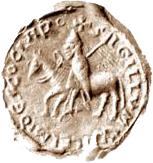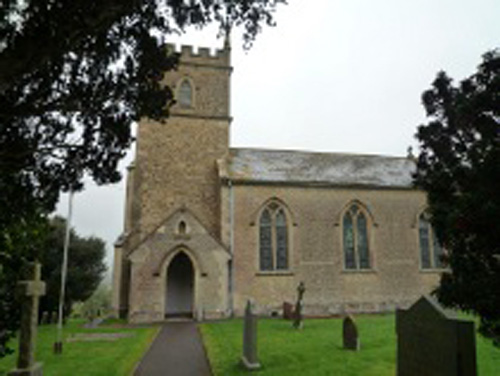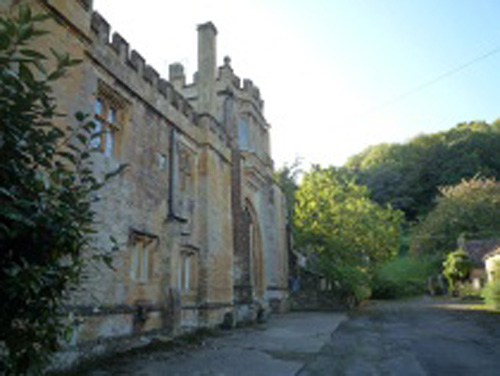Bretel de Saint Clair
Bretel de Saint Clair held at least twenty-five lordships across Dorset, Somerset and Devon, which at the time of the Domesday survey in 1086 amounted to nearly 5000 acres – around fifty times more than the holdings of Richard and Hubert. It is not known why there was such a large disparity, but must have had something to do with his relationship with king William, or the Count of Mortain, from whom many were held.
His principal manor was Stoke Trister in Somerset. This later became the caput of the barony of Stoke Trister. In 1086, it was assessed (gelded) for 3 hides, around 360 acres, and included a mill. A church was known to have existed in 1225.
Few of Bretel’s estates included large villages, but the most interesting one was Montacute, then called Bishopston, still the name of the main street in the village. Robert, count of Mortain, or his son William, established a borough, and Robert constructed a castle on St. Michael’s hill in 1068, overlooking the village. When William founded a Cluniac priory there about 1102, amongst the witnesses was ‘S. Britelli de Sancto Claro’. Bretel held a hide at Montacute, which was about 120 acres.
A legend long survived about the discovery of a black flint cross (the ‘Holy Rood’) on St. Michael’s hill before the Conquest. The Saxon owner of the estate at the time, said to be Harold Godwinson’s royal standard bearer, placed it in a wagon and named a number of possible destinations owned by him. Apparently, the oxen refused to move until he said ‘Waltham’, and then they started and continued non-stop until they reached Waltham. There he built an abbey, which became known as Waltham Abbey. The relic became an object of veneration, pilgrimage and celebration, even foretelling Harold’s defeat at Hastings when he stopped there to pray on his way from the battle of Stamford Bridge.
As for Bretel and his descendants, in 1164, the sheriff of Dorset accounted for a purpresture (wrongful seizure) of a librate of land that had belonged to Philip de Saint Clair, possibly a son or grandson of Bretel’s. However, a few years later, in 1172, Stoke Trister was held by Walter of Ashley. There is a strong likelihood that Felice, the wife of Walter of Ashley, was a Saint Clair heiress, taking her lands to the de Ashley family. They did not hold them for long, because by 1254 Stoke had passed to the Lorty family, who gave their name to the honour of Stoke Trister.


